1. AI-powered insights for refining employee recognition programs: Analyzing recognition messages using AI tools can help organizations identify patterns and gaps in their current programs, allowing them to align recognition criteria with business objectives.
2. Key employee recognition categories: Employees receive recognition for achievements in nine categories: customer satisfaction, financial performance, project delivery, adaptability or innovation, leadership or teamwork, stakeholder management, problem-solving, learning and development, and enhancing company reputation.
3. Benefits of targeted recognition: Recognizing specific achievements enhances employee motivation, engagement, and retention, driving overall productivity, innovation, and a positive organizational culture.
4. Impact on organizational success: Effective employee recognition contributes to sustained organizational growth by fostering a supportive culture, improving performance, enhancing reputation, and building a competitive advantage.
Organizations must recognize their employees’ exemplary achievements and the beneficial business actions they take. To this end, we at HiFives analyzed what employees are recognized for in their organizations using AI tools and techniques. The results of this analysis were quite exciting and intuitive. Let’s walk you through the analysis and the insights we garnered from this exercise.

To do this, we examined about 250,000 messages of recognition sent to employees by their managers and co-workers through the HiFives platform.
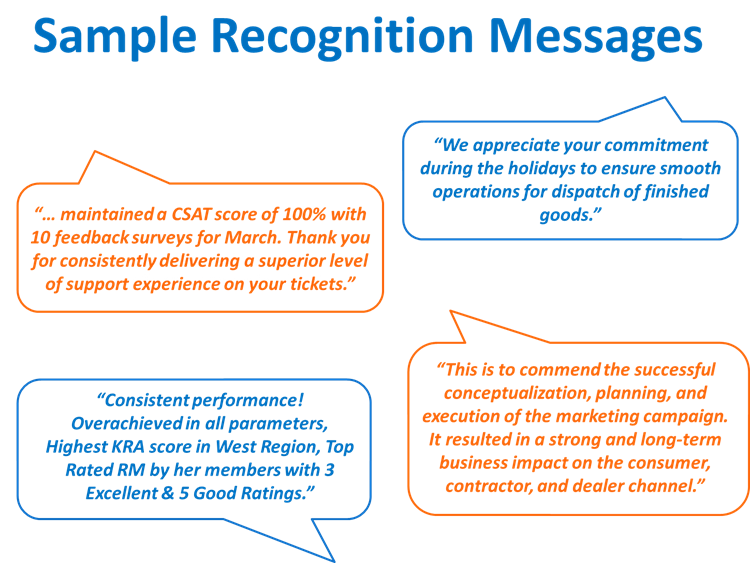
These recognition messages are from over 50 organizations across various industries and geographies.
They relate to various types of recognition, such as manager-nominated and peer-to-peer recognition, formal and informal recognition, planned recognition, and unplanned recognition, such as spot recognition.
We analyzed themusing various AI tools and techniques, such as Natural Language Processing (NLP).
So, here’s a summary of the steps that we followed:
1. Collated recognition messages/ citations from the HiFives platform
2. Removed all employee and company-specific content for privacy and confidentiality
3. Reduced the data to keep unique messages
4. Categorized achievements based on their similarities
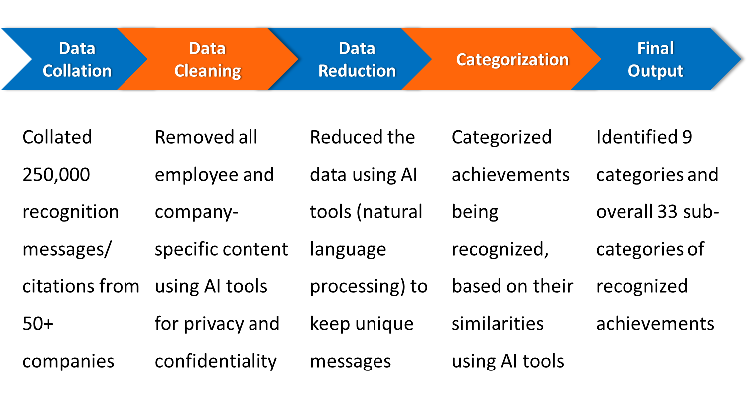
Finally, we identified only 9 categories and 33 subcategories of achievements for which employees received recognition.
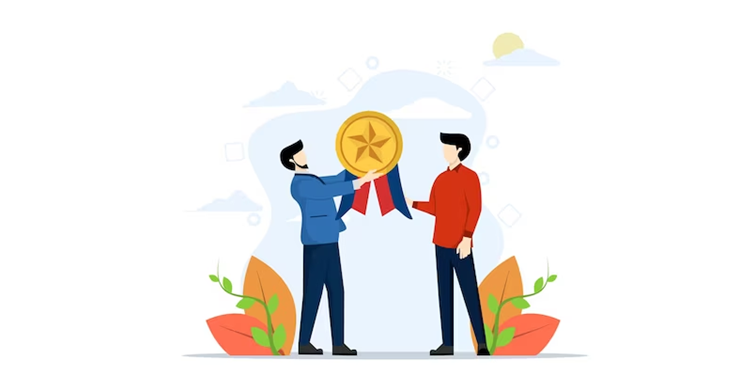
So, here are the nine categories of achievements for which employees received recognition:
1. Enhanced Customer Satisfaction
2. Boosted Financial Performance
3. Successful Project or Work Delivery
4. Demonstrated Adaptability or Innovation
5. Impactful Leadership or Teamwork
6. Effective Stakeholder Management
7. Effective Problem-Solving
8. Impactful Learning and Development
9. Enhanced Company Reputation
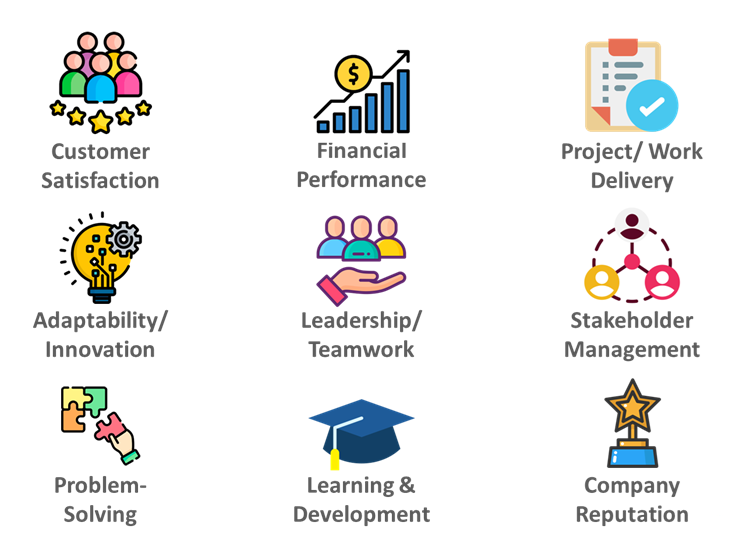

Employees received recognition for the following achievements related to improving customer satisfaction:
– Achieved high levels of client or customer satisfaction
– Built strong client relationships
– Received outstanding customer feedback or accolades
Enhanced customer satisfaction leads to positive outcomes, benefiting organizations through increased loyalty, revenue, and reputation while improving internal operations and employee morale.
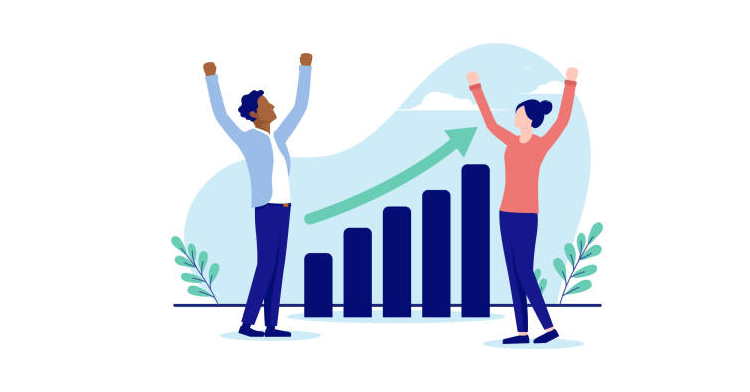
The following achievements to boost the financial performance of the organization for which employees received recognition:
– Achieved cost savings or cost reductions
– Efficient budget management
– Enhanced productivity, efficiency, or profitability
– Developed and implemented successful marketing campaigns or initiatives
– Generated significant business growth, market share, or revenues
Essentially, a boost in financial performance gives organizations the resources and flexibility to innovate, expand, and improve, ultimately leading to sustained growth and success.
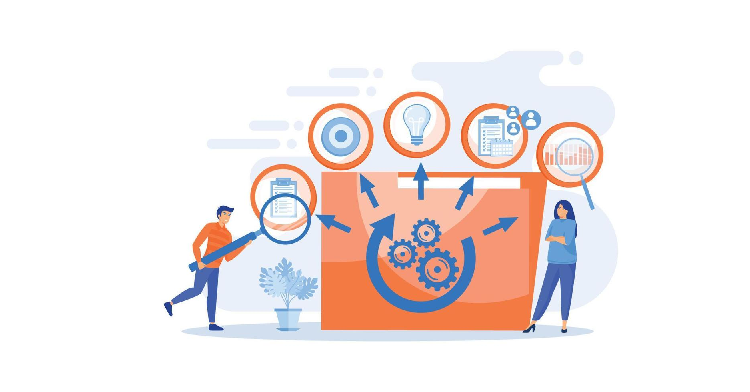
The following achievements related to successful projects or work delivery for which employees received recognition:
– Completed projects successfully despite challenges or complexity
– Consistent delivery of high-quality work within tight deadlines
– Consistently met or exceeded expectations or targets.
– Demonstrated exceptional performance
Successful project or work delivery is a cornerstone of organizational success.
It drives customer satisfaction, financial performance, operational efficiency, and strategic growth and builds a solid foundation for reputation, market opportunities, and long-term sustainability.

The following employee achievements related to the demonstration of adaptability or innovation for which employees received recognition:
– Adapted to a changing business environment and demonstrated adaptability, flexibility, or resilience
– Developed and implemented innovative strategies, solutions, or new technologies
– Proactively sought out and implemented process improvement
– Implemented efficient systems or workflows
In summary, adaptability and innovation provide organizations with the tools and capabilities to stay competitive, satisfy customers, grow revenues, enhance operational efficiency, engage employees, manage risks, build a strong reputation, and ensure long-term viability.
These benefits collectively contribute to the organization’s overall success and sustainability.
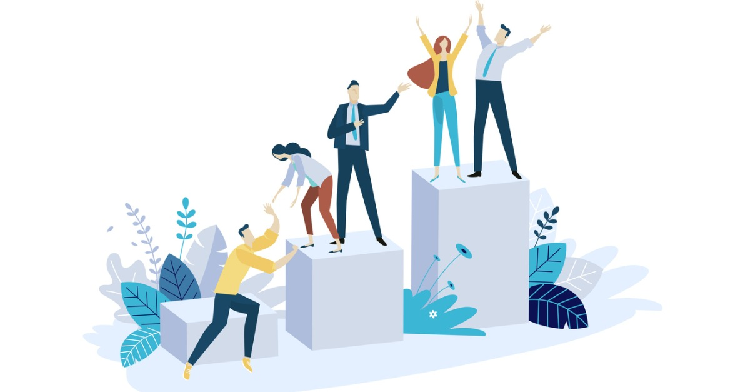
The following achievements related to leadership or teamwork for which employees received recognition:
– Boosted employee/ team morale
– Mentored and coached team members for professional growth and success
– Fostered collaboration/ teamwork or a positive work culture
– Demonstrated exceptional leadership or decision-making
– Successfully managed a team/ cross-functional team
Impactful leadership and teamwork are foundational to an organization’s success. They drive productivity, innovation, employee satisfaction, and retention while fostering a positive organizational culture and ensuring sustainable growth.
Hence, these elements created a resilient, efficient, and competitive organization.
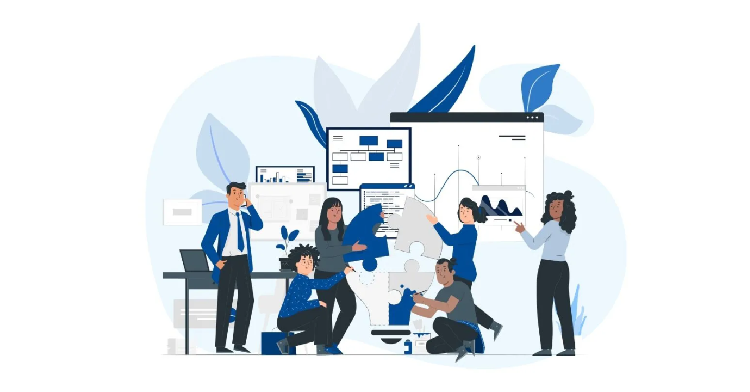
The following achievements related to effective stakeholder management for which employees received recognition:
– Developed and delivered impactful presentations
– Effectively communicated with stakeholders
– Negotiated successful contracts or deals
– Established strategic partnerships
Effective stakeholder management enhances trust, improves decision-making, mitigates risks, and fosters innovation, contributing to an organization’s overall success and sustainability.
It also ensures that the organization’s goals stay aligned with stakeholder expectations, leading to better support, improved reputation, and long-term growth.
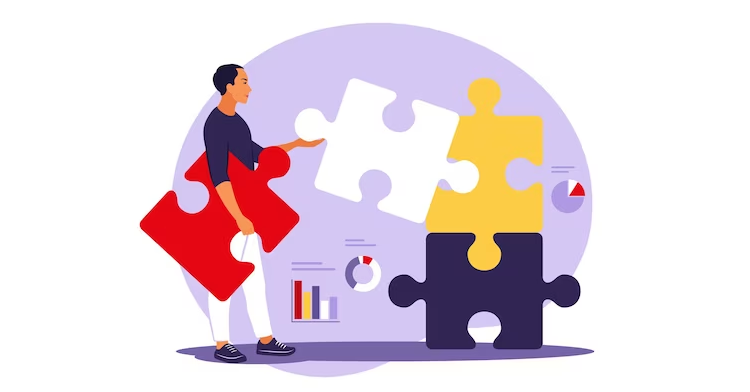
The following achievements related to effective problem-solving for which employees received recognition:
– Demonstrated exceptional problem-solving
– Demonstrated exceptional time management
– Proactively identified and solved problems
– Resolved complex issues effectively
– Spearheaded successful business initiatives or projects
In summary, effective problem-solving enhances efficiency, reduces costs, improves quality, and fosters innovation, all contributing to an organization’s overall success and sustainability.
It strengthens team collaboration, employee engagement, customer relationships, and organizational reputation while ensuring compliance and supporting sustainable growth.

The following achievements related to impactful learning and development for which employees received recognition:
– Acquired or enhanced a skill or competency that benefited the organization
– Implemented effective training programs
Learning and development benefits organizations by enhancing employee performance, engagement, and retention, fostering innovation, improving customer satisfaction, and providing a strategic advantage.
It supports adaptability, leadership development, compliance, and overall organizational performance, contributing to long-term success and sustainability.
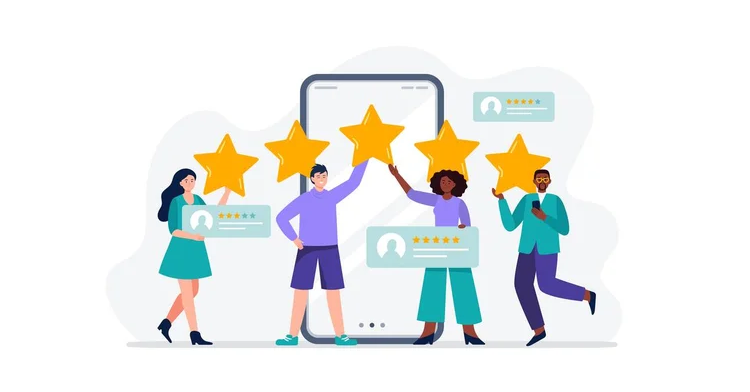
The following achievements related to the enhancement of the company’s reputation for which employees received recognition:
– Received industry awards or recognition
– Strengthened company reputation
In summary, enhanced company reputation drives customer loyalty, attracts top talent, increases sales and revenue, fosters better investor and partner relations, and provides a competitive edge.
Additionally, it enhances operational efficiency, fosters innovation, facilitates crisis management, and promotes market expansion, ultimately contributing to long-term success and sustainability.

AI helps identify gaps and trends—such as who’s being recognized, for what behaviors, and when—enabling HR teams to realign their programs with strategic business goals.
AI-driven personalization—like suggesting the right moment or crafting tailored recognition messages—makes appreciation more meaningful, boosting motivation and engagement. Other platforms also use AI to streamline personalized messaging and suggestion systems.
No—AI also frees HR from repetitive tasks, allowing them to focus on strategic things like culture-building. It can automate personalization studies, recommend rewards, and generate insights for leadership.
Yes—recent reports indicate that around 80% of organizations are piloting or using AI-driven recognition solutions, signaling a rapid shift toward more innovative, real-time appreciation programs.
It is a genuine concern. AI should assist, not replace, the human touch in recognition messages. The ideal approach is to use AI to enhance tone and emotional resonance while maintaining human-generated content.
Across HR functions, AI enhances fairness, reduces bias, and improves efficiency in areas like self-appraisals, performance reviews, onboarding, and employee engagement—ultimately elevating well-being and decision-making.
Yes. Risks include privacy concerns, algorithmic bias, and misuse. Ensuring AI tools are transparent, human-centered, and fair is vital to maintaining trust and effectiveness.
Use AI to surface meaningful insights, personalize and automate recognition, and enhance HR productivity—but always pair it with human empathy and oversight to keep appreciation genuine, equitable, and impactful.

Understanding why organizations recognize their employees is a crucial first step in refining existing employee recognition programs.
Here are a few thoughts:
It can help organizations reexamine their employee recogniton policies to identify gaps and opportunities, redefine recognition criteria, and re-align policies with critical business objectives and metrics.
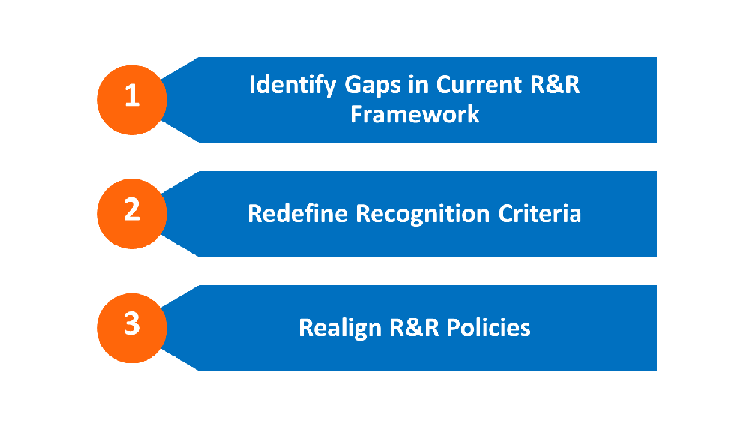

Lead author: Sagar Chaudhuri, the Co-Founder and CEO of HiFives. He is an HR Tech Evangelist with over 25 years of experience in both corporate and entrepreneurial settings. Previously, Sagar has held leadership roles at companies such as Genpact, Infosys, and ICICI Bank. He has an engineering degree from IIT Kharagpur and an MBA from IIM Lucknow. Connect on LinkedIn
To stay updated on the latest HiFives blogs, follow us on Twitter (@MyHiFives)